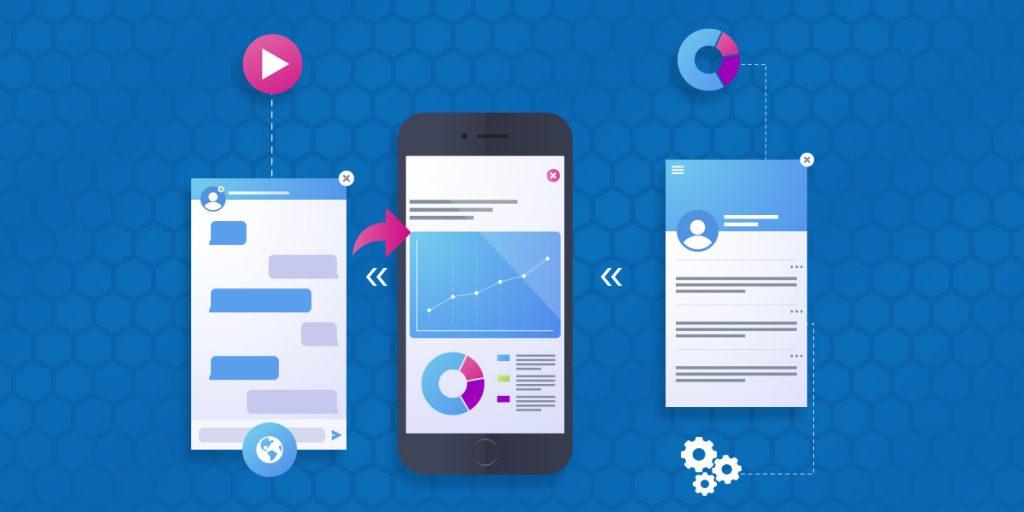In the digital era, where everyone is trying to build an app for almost anything, understanding your customers’ interest is very important before developing an app. Ask a few questions to yourself to understand the requirements of your customers: what types of application your customers prefer to download? Will your customer interests in making an in-app purchase? The response to these questions will vary according to the OS. Knowing the difference between the behaviors of iOS and Android users will help you decide which user group is suitable for your business goals and product, and ultimately assist you in selecting the right platform to develop your mobile application.
The primary objective of any application is to offer users a solution to a problem they collectively face. Without having a proper understanding of how user behavior differs depending on OSs, it will be difficult for you to build a mobile app that addresses the specific requirements of your target audience.
As 97 percent of the worldwide mobile market share accounted by Android and iOS, organizations that are considering building an app should go for both platforms, but in many cases because of some factors such as budget and time, they have to choose one or the other. Let’s have a look at some major differences between iOS and Android user behavior to get a clear idea which helps to select a better platform for your business:
User Demographics
According to the current statistics, Android holds over two-thirds of the global market share. The major reason behind this is the popularity of Android among developing and lower-income countries. On the other hand, iOS is more popular in Japan, UK and North America. Studies also state that iOS customers generally have higher app engagement and likely to spend more money per application.
A survey conducted by a reputed organization says that the annual income of iOS users is USD 53,231 compared to USD 37,040 for Android users. It also states that iOS customers spend more, mainly on products related to self-image like cosmetics and clothing. Information about income, location and purchasing decisions can impact the users’ actions such as subscription enrollment and in-app purchases. These demographic variances also have an influence on which kind of apps a user prefers to download altogether.
Device Compatibilities
There are some major differences between iOS and Android device that directly have an effect on the user experience and influence you to choose one over the other. For instance, when it comes to developing an app and submitting it to the Play Store, Android developers have a free hand, whereas to submit an app to the App Store, iOS developers are bound to follow the strict set of rules. The process of developing and verifying an iOS app may take a longer time to deliver a more secure, consistent and intuitive app experience. On the other hand, Android users praise the freedom and customizability their devices facilitate that allows them to actually modify their phone according to their desires.
Consumer Spending Behavior
Studying a user spending behavior to buy an app or to pay for in-app purchases is very difficult. In 2018, app revenue grew by 23 percent worldwide, but there is a huge gap between the spending of Android users and iOS users. According to a report published by app analytics firm, by the end of 2018, Apple’s App Store produced USD 46.6 billion, whereas the Google Play Store generated only half of Apple’s revenue that is USD 24.8 billion, which is a difference of 88 percent. Usually, the iOS user is likely to spend more on clothing, fashion accessories and cosmetics. In contrast, most of the Android apps depend on advertising as the main source to generate profit. These details are very helpful for organizations looking for iOS or Android mobile app development for their retail business or to generate revenue from apps.
User Engagement and App Retention
Every individual is different and their way of viewing and engaging with content varies from each other. According to a survey, on an average, iOS user spends around 5 hours per day on their phone, while Android users spend around 3 hours and 42 minutes on their phone. While it comes to notifications, iOS users take around seven minutes to open notifications while Android users usually take an average of 48 minutes to take any action on notifications. The Android customer base includes a greater number of media users and the Android users prefer performance, utility, anti-virus and productivity apps. The performance of goals such as registration, purchase, reservation, subscription and in-app purchase vary between Android and iOS. In the user engagement metrics, iOS outshines Android in all of the above-mentioned categories, except registration, in which Android has an advantage.
Android or iPhone App Development, which is better for your business?
While selecting a platform to develop an app for your business, the major question to ask is: what is the purpose of the application and what is your target user group? Selecting an appropriate platform entirely depends on the purpose you are trying to achieve and what is your plan to monetize your mobile app. If possible, you should develop an app for both iOS and Android to gain the most diverse and widest user base; however, developing an app for both platforms is not feasible.
Each platform has some unique characteristics and offers different advantages, but knowing the behavior of the users of each operating system can help you make better decisions about where to put your efforts to meet the most business requirements and goals.
Source URL: https://www.panaceatek.com/how-user-behavior-impact-mobile-app-development/












No Comments